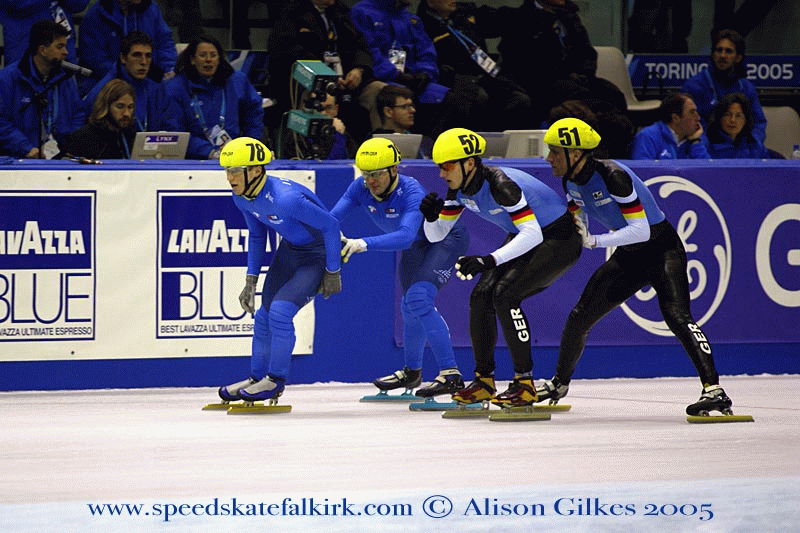
Images of the 2005 European Championships provided by the Falkirk and Stirling Short Track Skating Club
 Copyright © Michael Richmond.
This work is licensed under a Creative Commons License.
Copyright © Michael Richmond.
This work is licensed under a Creative Commons License.
One type of short-track skating race is a relay: four members on each team take turns during a grueling 37-lap contest. Unlike track relay races, there is no baton. One member simply has to touch another to switch places.

Images of the 2005 European Championships provided by
the Falkirk and Stirling Short Track Skating Club
However, if you watch a race, you'll see that the skaters don't simply slap hands; instead, the incoming skater (number 51 of the German team in the example below) runs straight into the outgoing skater (number 52). As they collide, the incoming skater pushes his teammate forward.
In the example above, incoming skater 51 has m1 = 62 kg and original speed v1 = 9 m/s, while skater 52, of mass m2 = 68 kg, is moving at v2 = 6 m/s in a running start. They then collide and remain in contact for about 1.5 seconds.. During this time, skater 51 pushes as hard as he can, exerting an average force F = 150 N on his partner.
You need to arrange the order of the skaters in the relay. Who should be the final skater, and who should be penultimate? Explain your choices.
 Copyright © Michael Richmond.
This work is licensed under a Creative Commons License.
Copyright © Michael Richmond.
This work is licensed under a Creative Commons License.